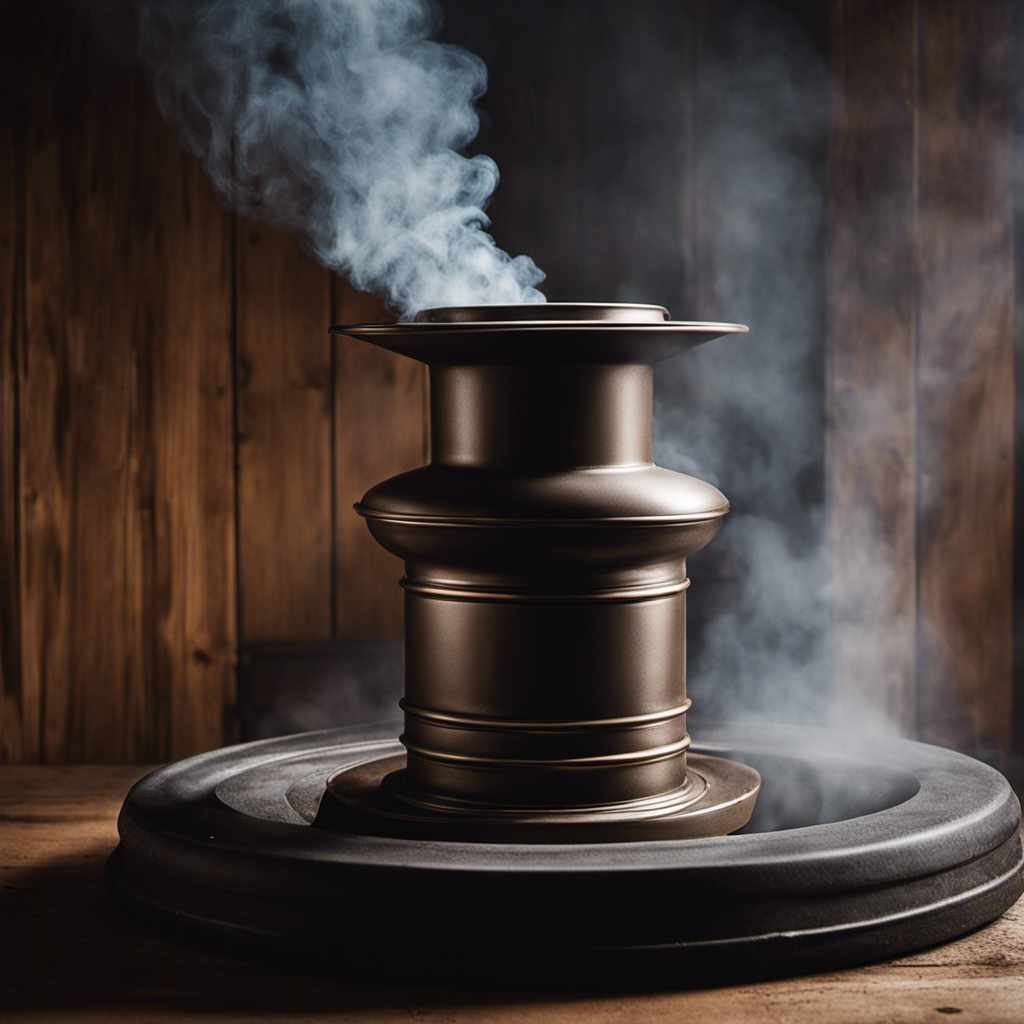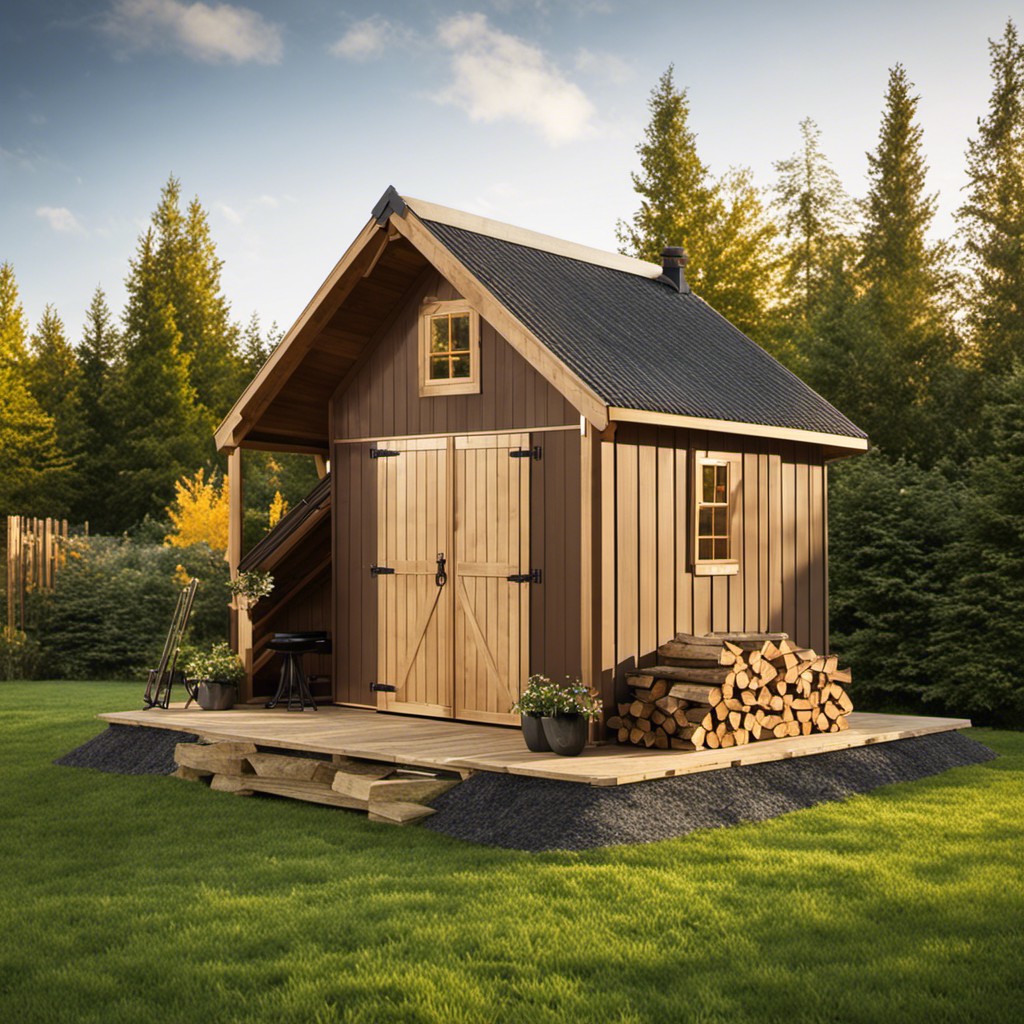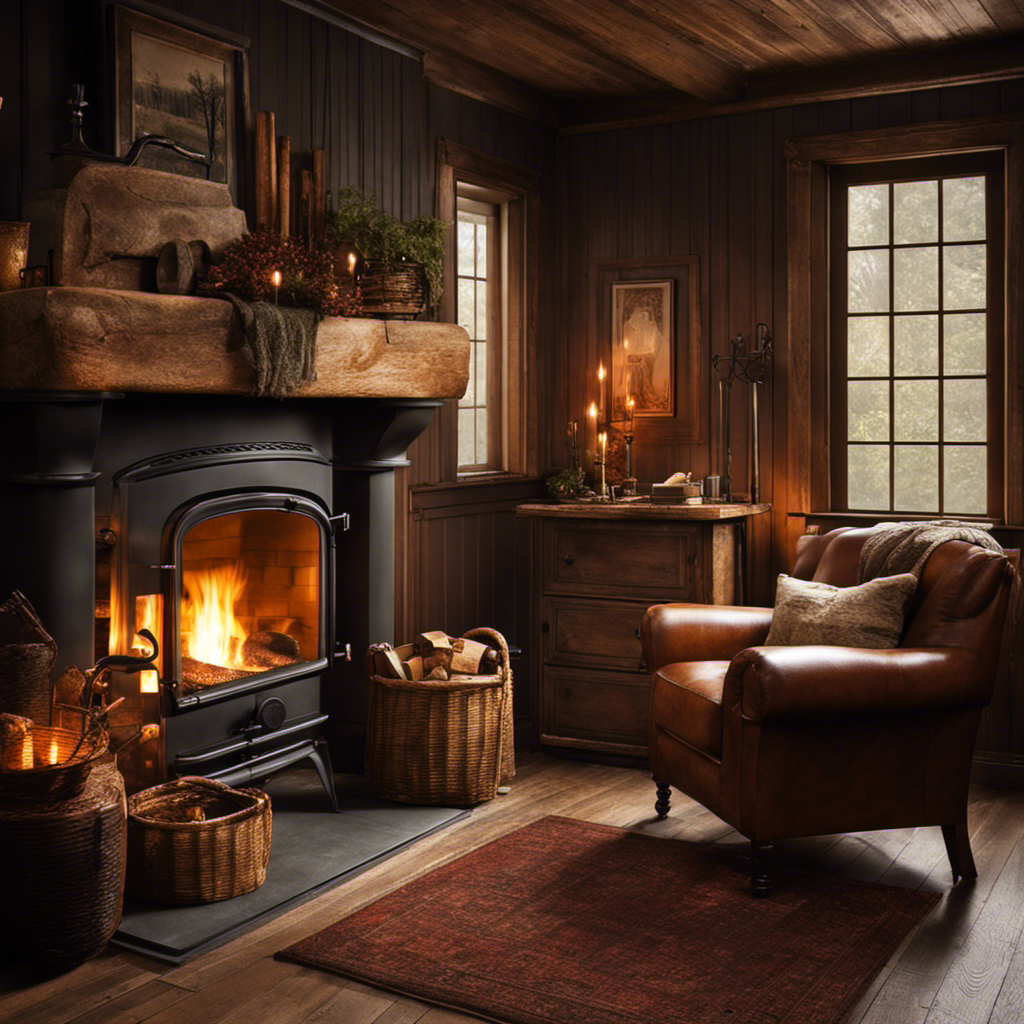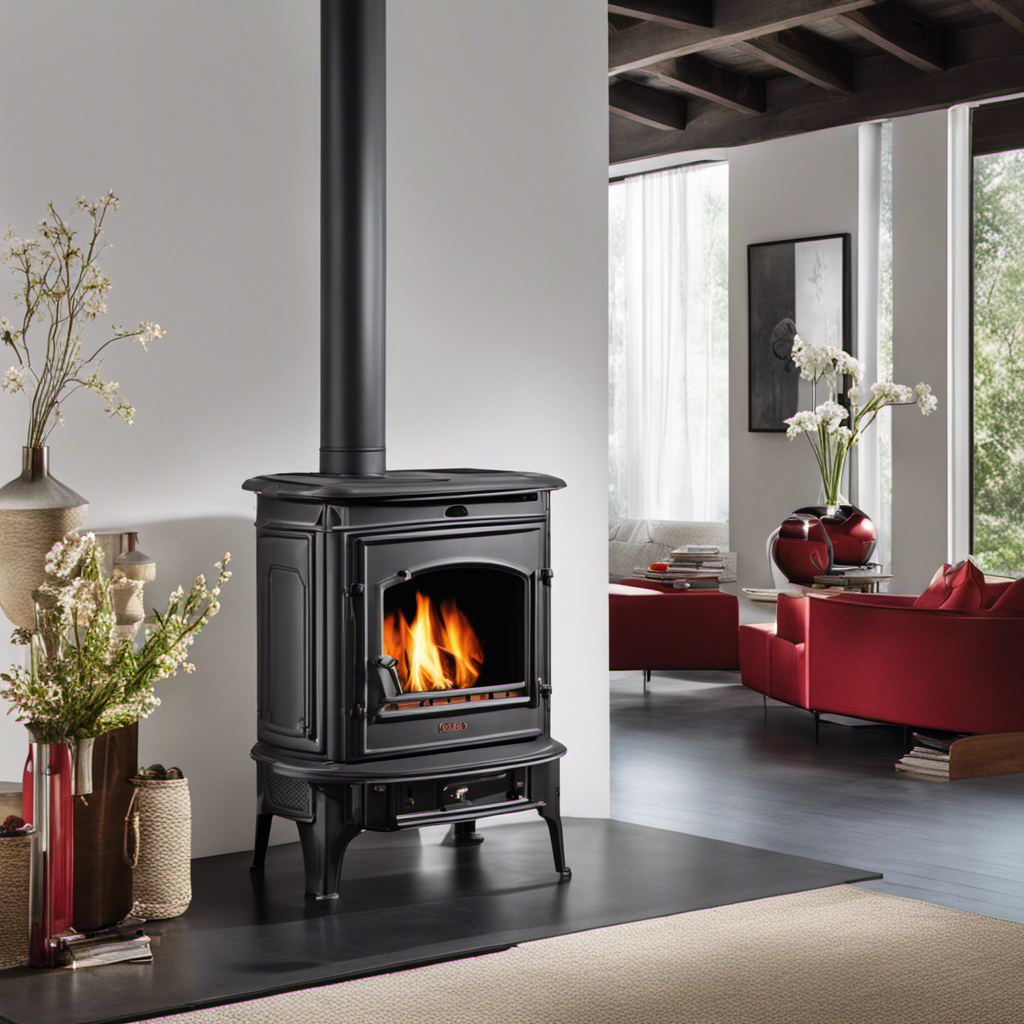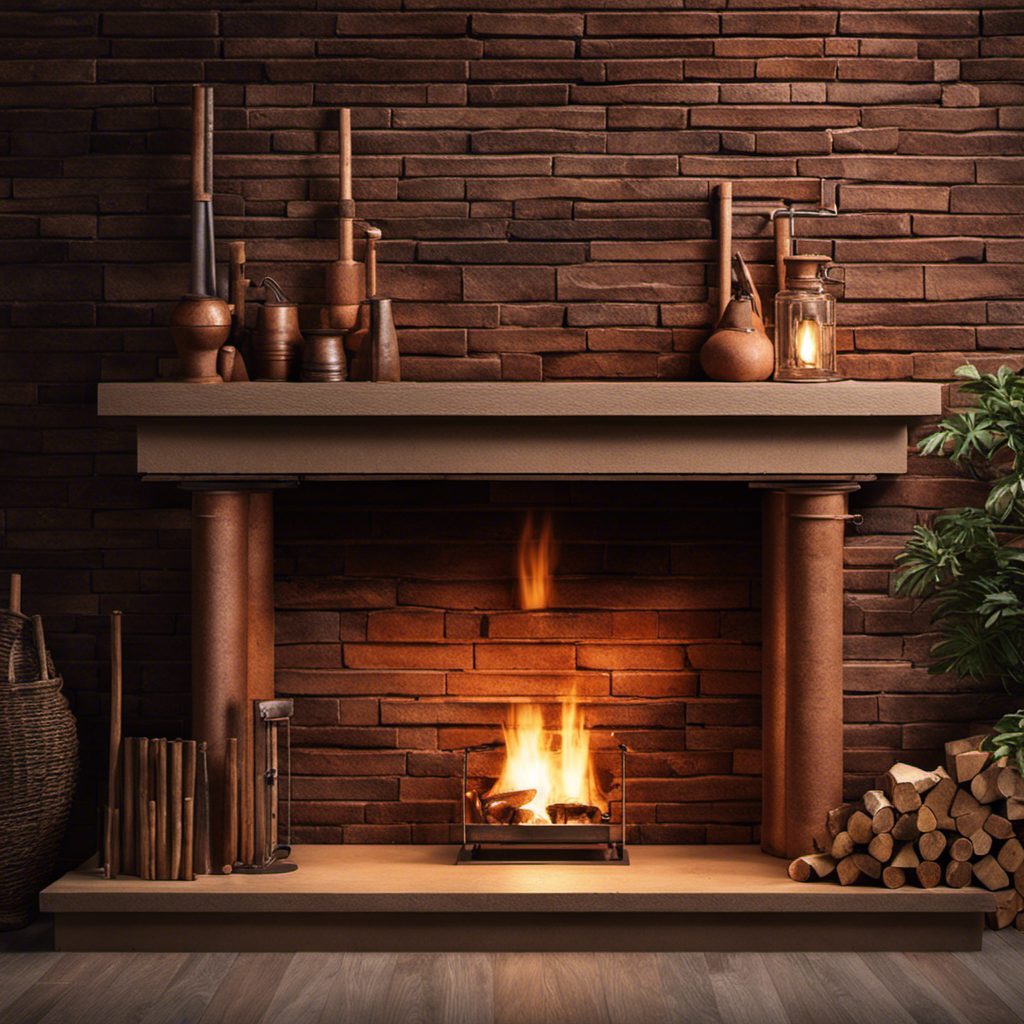Hello there!
Have you ever noticed a funky smell coming from your wood stove? Well, don’t worry, because I’ve got you covered.
In this article, I’ll share some expert tips and tricks to help you tackle that pesky stove pipe odor. From understanding the causes to proper cleaning techniques, we’ll cover it all.
So, let’s dive in and get that wood stove smelling fresh again!
Key Takeaways
- Creosote buildup and mold or mildew are common causes of stove pipe odor.
- Regular cleaning and maintenance are important to prevent odor and ensure stove pipe longevity.
- Regular chimney inspections and burning dry, seasoned wood can help prevent creosote buildup.
- Properly drying burnt or wet wood can help remove moisture and odors.
Understanding the Causes of Stove Pipe Odor
I’ve been researching and trying different methods to get rid of the stove pipe odor, but I still can’t seem to understand the exact causes.
There are some common misconceptions about what causes stove pipe odor, such as thinking it’s solely due to a dirty chimney or poor ventilation. While these factors can contribute to the smell, there are other potential causes that need to be considered.
One of the main culprits is the buildup of creosote, a sticky and flammable substance that forms when wood is burned. Creosote can accumulate in the stove pipe and release unpleasant odors.
Another potential cause is the presence of mold or mildew, which can grow in damp and poorly insulated stove pipes.
It’s important to address stove pipe odor not just for the sake of eliminating unpleasant smells, but also to reduce potential health risks associated with inhaling creosote particles and mold spores.
Proper Cleaning and Maintenance Techniques
To ensure the longevity of your stove pipe and prevent odor, regular cleaning and proper maintenance are essential. Cleaning frequency depends on how often you use your wood stove, but it is generally recommended to clean it at least once a year. However, if you notice a strong odor or reduced efficiency, it may be necessary to clean it more frequently. When cleaning the stove pipe, it’s important to inspect for blockages such as creosote buildup or debris. Blockages can restrict airflow and lead to odor issues. To emphasize the importance of regular cleaning and inspection, here’s a table highlighting the potential consequences of neglecting these maintenance tasks:
| Neglecting Cleaning and Inspection | Consequences |
|---|---|
| Reduced efficiency | Increased fuel consumption |
| Increased risk of chimney fire | Smoky odor and poor air quality |
| Restricted airflow | Difficulty starting and maintaining a fire |
Checking for Creosote Buildup
I’ll show you how to check for creosote buildup to ensure the safety of your wood stove. Creosote is a sticky, flammable substance that can accumulate in the chimney and stove pipe over time. Here’s how to prevent and remove creosote:
-
Regular chimney inspections: Have your chimney inspected at least once a year by a professional chimney sweep. They’ll check for any signs of creosote buildup and clean it out if necessary.
-
Burn dry, seasoned wood: Wet or unseasoned wood produces more smoke and increases the likelihood of creosote formation. Make sure to only burn dry, seasoned wood in your wood stove.
-
Monitor the stove temperature: Burning your wood stove at a lower temperature can lead to incomplete combustion and the production of more creosote. Keep an eye on the stove temperature and adjust it accordingly.
-
Use creosote removal products: There are various creosote removal products available on the market. Follow the instructions carefully and use them periodically to help prevent and remove creosote buildup.
By following these steps, you can minimize the risk of creosote buildup and ensure the safe operation of your wood stove.
Now let’s move on to dealing with burnt or wet wood.
Dealing With Burnt or Wet Wood
I can salvage the burnt wood by using it for outdoor fire pits. When you have burnt or wet wood, it may seem like a lost cause, but there are techniques you can use to salvage it. The key is to properly dry the wood to remove any moisture or lingering odors. Here are some troubleshooting tips to help you with this process:
| Drying Technique | Description |
|---|---|
| Air drying | Place the wood in a dry, well-ventilated area and allow it to naturally dry over time. This method is effective for smaller pieces of wood. |
| Kiln drying | This technique involves using a kiln or a specialized drying chamber to rapidly remove moisture from the wood. It is a faster method but requires specialized equipment. |
| Solar drying | Utilize the power of the sun by stacking the wood in a sunny area. The sun’s heat will help to evaporate the moisture, drying the wood effectively. |
Using Odor Eliminators and Air Purifiers
Using odor eliminators and air purifiers can significantly improve the air quality in your space, eliminating any lingering odors from burnt or wet wood.
Here are four tips to help you choose the right air fresheners and try DIY methods for eliminating stove pipe odor:
-
Consider the type of odor: Different air fresheners target specific odors, so choose one that’s designed to eliminate smoke or wood-related smells. Look for products with activated charcoal or enzymes that can neutralize the odor molecules.
-
Read reviews and recommendations: Before purchasing an air freshener, take some time to read reviews and recommendations from other users. This can give you insights into the effectiveness of the product and help you make an informed decision.
-
Try natural alternatives: If you prefer a DIY approach, consider using natural odor eliminators such as baking soda, vinegar, or lemon juice. These ingredients can help absorb and neutralize odors without introducing additional chemicals into your space.
-
Clean the stove pipe: Regularly cleaning your stove pipe can help prevent and reduce odor buildup. Use a chimney brush or a DIY cleaning solution to remove any soot, creosote, or debris that may be contributing to the smell.
Frequently Asked Questions
Can I Mask the Odor With Scented Candles or Air Fresheners?
Yes, you can try using scented candles or air fresheners to mask the odor from the stove pipe. However, it’s important to address the root cause of the smell for a long-term solution.
How Often Should I Clean My Stove Pipe to Prevent Odor?
To prevent stove pipe smell, I clean my stove pipe regularly. Maintaining stove pipe cleanliness is crucial in preventing odor. I make sure to clean it at least once a month to keep it smelling fresh.
Can a Blocked Chimney Cause Stove Pipe Odor?
A blocked chimney can indeed cause stove pipe odor. When the chimney is blocked, the smoke and gases from the wood stove cannot properly vent, leading to a buildup of creosote and other byproducts that result in unpleasant smells.
Is It Safe to Use My Wood Stove if There Is a Strong Odor Coming From the Stove Pipe?
It’s important to address a strong odor coming from the stove pipe before using the wood stove. There could be potential causes, such as a blocked chimney. Consider using stove pipe deodorizers to eliminate the smell.
Are There Any Health Risks Associated With Stove Pipe Odor?
There can be health risks associated with stove pipe odor, such as inhaling harmful fumes. To prevent this, it’s important to regularly clean and maintain your wood stove, ensuring proper ventilation and eliminating any potential sources of odor.
Conclusion
In conclusion, taking proper care of your wood stove and stove pipe is essential to prevent unpleasant odors. Regular cleaning and maintenance, checking for creosote buildup, and using dry and well-seasoned wood can help eliminate any smells.
Additionally, using odor eliminators and air purifiers can further enhance the air quality in your home. By following these steps, you can enjoy the warmth and comfort of your wood stove without any unwanted odors.
Growing up surrounded by the vast beauty of nature, Sierra was always drawn to the call of the wild. While others sought the comfort of the familiar, she ventured out, embracing the unpredictable and finding stories in the heartbeat of nature.
At the epicenter of every remarkable venture lies a dynamic team—a fusion of diverse talents, visions, and passions. The essence of Best Small Wood Stoves is crafted and refined by such a trio: Sierra, Logan, and Terra. Their collective expertise has transformed the platform into a leading authority on small wood stoves, radiating warmth and knowledge in equal measure.

